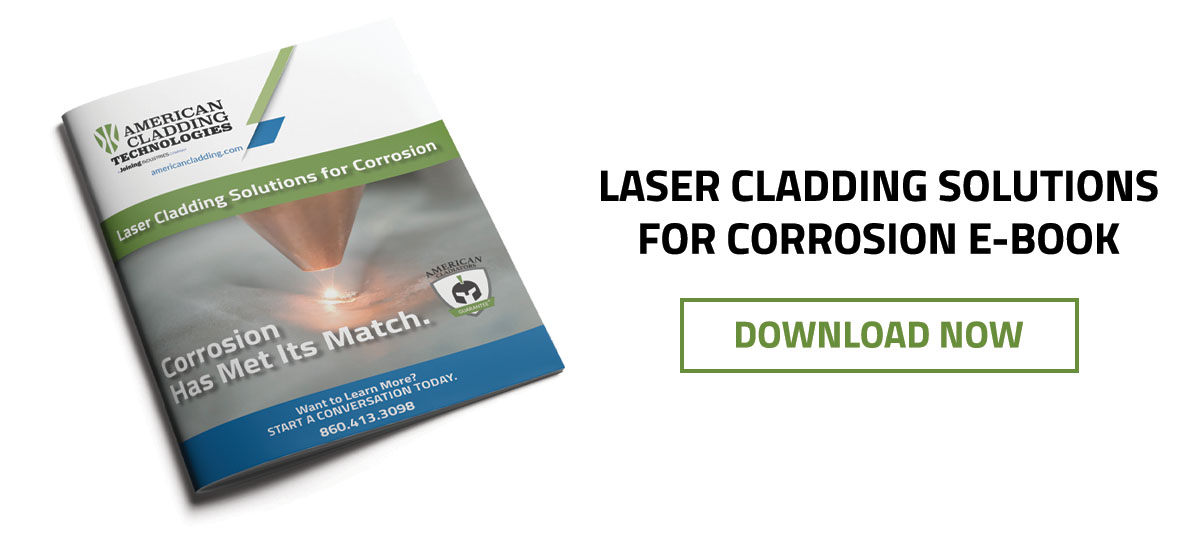Corrosion is a massive problem across all industries. NACE (National Association of Corrosion Engineers) estimates the global cost of corrosion at $2.5 trillion a year. The oil and gas industry represents a big chunk of these costs with its complex and challenging production techniques and the environmental risks should components fail.
From offshore to downhole drilling and production, corrosion strikes virtually every component across the oil and gas industry. While there are many sources of corrosion, there are also many methods to prevent or slow the process and protect expensive components. Laser cladding is increasingly being used as a solution for many corrosion problems in the industry.
Laser cladding, also known as laser metal deposition (LMD), is a process that uses metal alloy powders to apply a protective coating to the surfaces of metal components to increase their corrosion or wear-resistance. Laser cladding offers a number of advantages over more traditional additive processes, including:
- Improved metallurgy with higher material hardness
- Lower powder costs due to thinner coatings
- Less stress due to lower heat input
- Shorter process time than traditional processes like PTA
Here are a few examples of how LMD is being used in the oil and gas industry:
In offshore drilling, hydraulic cylinders are exposed to salt from ocean spray that causes corrosion, pitting and scratching. This can lead to oil contamination, seal failure and eventually machine failure. Laser cladding a piston rod provides a durable coating with extreme hardness that can withstand harsh environmental conditions. Another potential application in the offshore industry are risers in offshore structures. The splash zone area above the high tide mark experiences severe corrosion. Any protective coating or film is constantly eroded by waves. However, LMD provides a metallurgically bonded corrosion-resistant coating that can be field repaired. Downhole drilling tools are another type of equipment that can benefit from the cladding process. Drill stabilizers are exposed to extreme wear from rubbing against the wall of the hole. In harsh conditions, long hole drilling operators often need to change worn stabilizers, incurring downtime and labor costs. LMD provides a high wear-resistant coating with a metallurgical bond. Drillpipes experience extremely harsh conditions such as formation fluids, drilling mud, stress corrosion and erosion. Drillpipe leaks or washouts occur in the threaded drillpipe connections called tool joints. Internal diameter cladding, which applies a coating on the internal surfaces of tubes and pipes, provides a highly corrosion- and wear-resistant coating.
There are other oil and gas applications that can benefit from this process. If you have questions about applications not mentioned here, get in touch with our experts or leave a comment in the space below.
Our e-book on laser cladding solutions for corrosion offers additional examples of applications in several other industries. Download it here.
